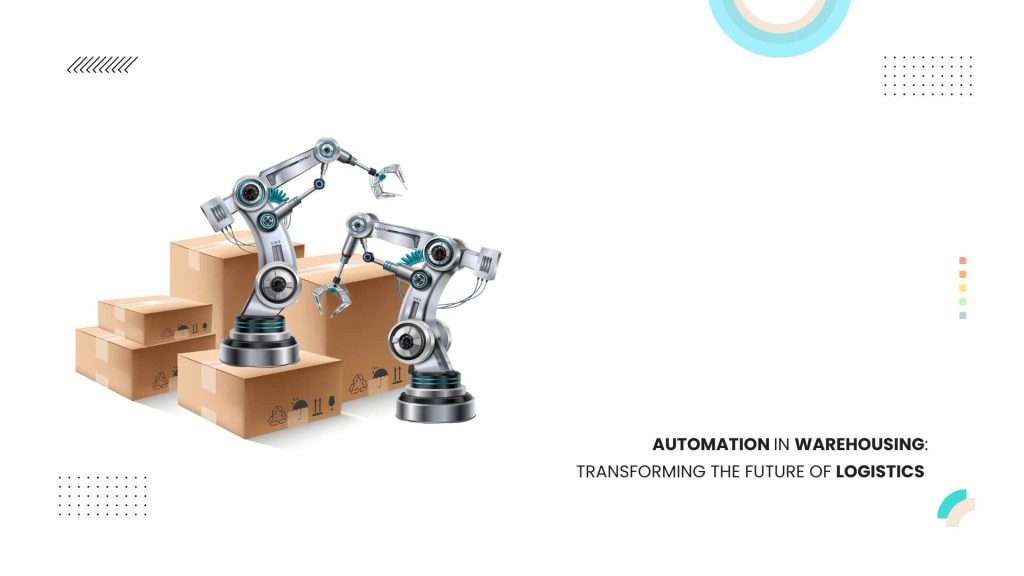In the ever-evolving landscape of logistics, warehouses stand as the foundation of efficient supply chains, serving as the pivotal link between manufacturers and consumers. However, traditional warehouse operations often face challenges in meeting the demands of modern commerce, such as the need for speed, accuracy, and cost-effectiveness. Fortunately, the rise of automation technologies is revolutionizing the way warehouses function, paving the way for a more streamlined, efficient, and agile future.
Future Trends in Warehouse Automation
Blockchain Technology:
By delivering a secure way to record transactions and track assets, blockchain technology holds the potential to revolutionize inventory management, supply chain transparency, and payment processing within warehouses.
The Internet of Things (IoT):
IoT-enabled sensors can collect real-time data on inventory levels, equipment performance, and environmental conditions, allowing warehouses to optimize processes, reduce waste, and enhance safety.
Collaborative Robotics:
Collaborative robots, affectionately known as cobots, partner up with human workers to tackle repetitive taxing duties like picking and packing, ultimately boosting productivity, efficiency, and workplace safety.
Cloud-Based Solutions:
Cloud-based warehouse management systems (WMS) offer scalability, flexibility, and accessibility, enabling warehouses to easily adapt to ever-changing business requirements and seamlessly integrate with other enterprise systems.
Warehouse Drones:
Drones equipped with cameras and sensors can automate inventory counting, inspection, and monitoring tasks, significantly reducing the labor required for management and asset tracking.
Digital Warehousing:
Digital twins and virtual simulations enable warehouses to visualize and optimize their operations, from layout design and inventory placement to workflow planning and resource allocation.
Smart Factory Transformation:
Integrating warehouse automation with smart manufacturing technologies allows for end-to-end supply chain optimization, from production to distribution, enabling Just-in-Time (JIT) inventory management and predictive maintenance.
Enhanced Order Fulfillment Processes:
Tech automation such as automated guided vehicles (AGVs), autonomous mobile robots (AMRs), and automated sortation systems streamline order picking, packing, and shipping processes, reducing errors, improving order accuracy, and speeding up delivery times.
Key Technologies for Automated Warehousing
Automated warehousing relies on a variety of technologies to streamline operations and enhance efficiency. Some key technologies include:
Robotics:
Autonomous mobile robots (AMRs) and Automated guided vehicles (AGVs) play a vital role in moving goods within the warehouse. These robots can navigate through the facility, transport items, and even perform tasks like picking and packing.
Warehouse Management Systems (WMS):
WMS software optimizes inventory management, order processing, and warehouse operations. It coordinates with other technologies like barcode scanners, RFID systems, and robotics to ensure smooth functioning.
Barcode and RFID:
Radio Frequency Identification (RFID) tags and barcodes help track stock accurately. They enable real-time visibility of products, reduce errors in picking and packing, and improve inventory management.
Automated Storage and Retrieval Systems (AS/RS):
AS/RS utilize automated machinery to efficiently store and retrieve goods from racks or shelves. These systems can significantly increase storage density and retrieval speed compared to manual methods.
Machine Learning and AI:
Artificial intelligenc algorithms are used for predictive analytics, demand forecasting, and optimizing warehouse operations. They can examine extensive amounts of data to identify patterns and improve inventory accuracy.
Warehouse Control Systems (WCS):
WCS coordinates the flow of materials and information within the warehouse. They integrate with WMS and other technologies to ensure efficient task execution and resource optimization.
Voice-directed Picking:
Voice recognition technology enables hands-free picking processes, where workers receive instructions through a headset and verbally confirm their actions. This increases productivity and reduces errors.
Cloud Computing and IoT:
Cloud-based platforms and Internet of Things (IoT) devices enable real-time monitoring of warehouse operations from anywhere. They facilitate data sharing, remote management, and scalability.
By integrating these technologies, automated warehousing systems can optimize space utilization, reduce labor costs, minimize errors and fulfilling orders.
Conclusion
Warehouse Automation with Acumatica Cloud ERP streamlines operations by automating tasks, ensuring accuracy, offering real-time visibility, and optimizing operations. By embracing automation technologies, warehouses can overcome traditional limitations, achieve greater efficiency, and position themselves for success in the rapidly evolving logistics landscape. With Acumatica Cloud ERP, warehouses can harness the power of automation to meet the demands of modern commerce and drive growth in the digital age.

Vijay comes with a vast experience in ERP and enterprise solutions space with about 20 years of experience in various packaged application like Acumatica, SAP, Orion, Salesforce.com, SugarCRM and, SalesLogix.

